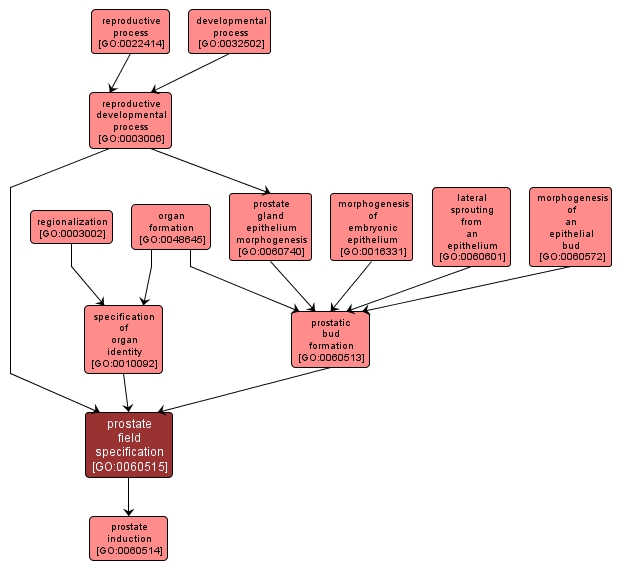GO TERM SUMMARY
|
| Name: |
prostate field specification |
| Acc: |
GO:0060515 |
| Aspect: |
Biological Process |
| Desc: |
The process by which a specific region of the urogenital sinus epithelium is delineated into the area in which the prostate gland will develop. |
|

|
INTERACTIVE GO GRAPH
|














